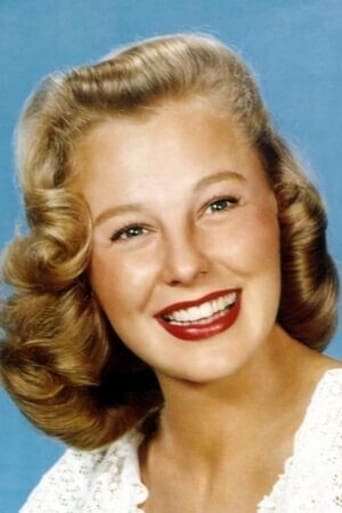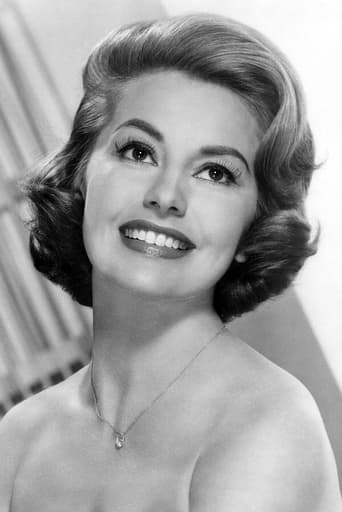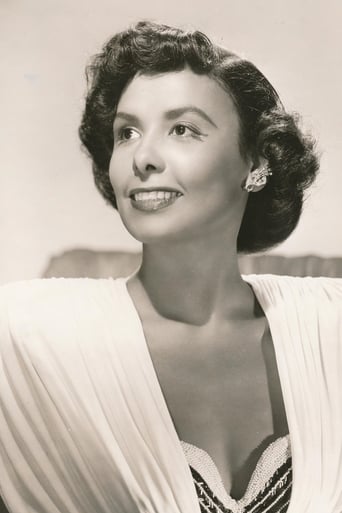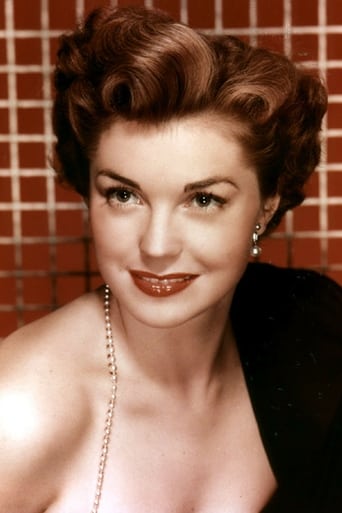Smartorhypo
Highly Overrated But Still Good
MamaGravity
good back-story, and good acting
Afouotos
Although it has its amusing moments, in eneral the plot does not convince.
Derry Herrera
Not sure how, but this is easily one of the best movies all summer. Multiple levels of funny, never takes itself seriously, super colorful, and creative.
Martin Onassis
This film is a solid documentary about a form of culture that defined America to the world, and yet which we have completely abandoned.This film does a great job of tracing the growth of the musical from its pretty amateurish beginnings (you can really tell the lousy quality of the early sound) to the pinnacle of classic Hollywood musicals that made American cinema a symbol of our nation's greatness in the 20th Century.A few thoughts on what we've lost - the use of color in these films is astounding. In a world of verite grays and browns, the splashes of color and dynamic range from darks to lights in studio shots are incredible. The sets are deliberate fantasy instead of constantly reminding us of the dreariness of the real world. When did film become and exercise in reminding us of the doom of the world all the time? Isn't entertainment supposed to do the opposite on occasion?The action that fills the frame - from front to back, with the 'action' being rehearsed dance professionals costumed and coiffed. It;s a level of teamwork across disciplines that films simply don't concentrate on anymore. Everyone's a weapons or vehicle or gadgets specialist. These people ENTERTAIN with their voices and bodies, supported by wardrobe and choreographers and songwriters and performers. It's a lost art.I understand that you can't recreate this greatness because the studio system doesn't exist, and you would be recreating a time that doesn't exist any longer, but Hollywood COULD do more musicals. Dancing with the Stars is very popular. People want to be taken out of their lives. Musicals are a challenge, but when done right, they are truly incredible!
Lee Eisenberg
If you've read any of my reviews of musicals, then you'll know that I watch them for the purpose of heckling them like Mike, Servo and Crow do to the crummy movies that Dr. Forrester and TV's Frank send them on "Mystery Science Theater 3000". My repeatable snark to "That's Entertainment! III" included: (when Gene Kelly tears a newspaper apart): Agh! Why'd you have to rip me up?! (while the water rises around Esther Williams): No, no! I'm drowning! Beyond that, I noticed a whole bunch of politically incorrect material. To be certain, "Show Boat" was nothing more than a whitewash of the Jim Crow south. I made sure to reference Princess Leia when Debbie Reynolds appeared, to shout "KHAN!" when Ricardo Montalbán appeared, and to say "You've got some 'splainin' to do!" when Lucille Ball appeared. And really, can you think of Hedy Lamarr and not hear "it's Hedley"? One thing that's worth noting is that Yip Harburg, who co-wrote "Over the Rainbow", later got blacklisted. So did Lena Horne.I'd like to see a tribute to cult movies and horror movies. The hosts would have to be Elvira, Bruce Campbell, Robert Englund, Linnea Quigley, etc.Long story short, I just don't take happy-go-lucky movies seriously, and so there's no way that I could take this documentary seriously. Sorry about that.
jotix100
Having seen the previous two installments of this series about MGM's great years, we hadn't seen the last one, but thanks to TCM, which showed it recently, we now have completed the cycle. The documentary, directed by Bud Friedgen and Michael Sheridan, brings us back to the golden years of the studio that boasted it had more stars than any one else in Hollywood.This new version concentrates on the singing and dancing stars. Its 113 minutes running time flies by without noticing because of the quality of the material selected to be shown.There is a magnificent black and white sequence showing Eleanor Powell performing a number and at the same time on a second screen we are taken to the actual filming of the routine as the technicians worked on it. Even for the time when it was filmed, it was revolutionary. Also, we see a dance routine by Fred Astaire with two different costumes and the same music shown on split screen where the "master" himself performs the exact same steps in both sequences. Amazing!The only sad note of the documentary is to see how Lena Horne, a talented and gorgeous black woman who was employed by the studio, but was never given a starring role on films that involved other white actors. In fact, it's a shame she lost a plum role in "Showboat" because of the discrimination at the time.It was great to watch the MGM stars narrating the different segments. Thus, we saw June Allyson, Cyd Charisse, Ann Miller, Gene Kelly, Debbie Reynolds, Esther Williams, Howard Keel introducing the different production numbers in the documentary.Without a doubt, Hollywood was a factory of dreams and MGM was the best place where they came true.
petershelleyau
Part 3 of the Ted Turner compilation of MGM footage and in celebration of the studio's 70th anniversary (thus the Overture, one gathers), this documentary written and directed by Bud Friedgen and Michael J Sheridan, and hosted by various surviving contract players is notable mostly for the out-takes and alternate takes of musical comedy numbers.
That MGM was required to release one film a year and that they had no competition from television at their height, is still no excuse for the mediocrity that blights a lot of the historical footage here. It's hard to ridicule vaudeville and novelty acts like the athletic Ross Sisters, who tumble erotically as one joined mass, when the alternative are people as limited as Eleanor Powell, Esther Williams, and June Allyson.
One questions the reason given for the unfinished March of Time, begun in 1930, as audience interest in technicolor musicals had fallen, though the editors goof when they supply a montage of black and white "Hollywood Parties" of the period and include Garbo in Two Faced Woman. The use of split screen to show alternate takes works best with Fred Astaire using identical choreography for Dancin' Man from Belle of New York. The footage of stage hands taking the set apart to allow the camera to move and follow Eleanor Powell dancing Fascinatin' Rhythm from Lady Be Good is done in too long a shot for us to make a comparison with Powell's closer shot.
The choices between Cyd Charisse in The Band Wagon and Joan Crawford in Torch Song both dubbed to India Adams singing Two Faced Woman, and the alternate takes of Debbie Reynolds doing A Lady Loves from I Love Melvin, both reveal awful numbers, though Crawford's "tropical" makeup and disposal of her wig a la Julie Andrews in Victor/Victoria has camp appeal. Ava Gardner's own vocal of Can't Help Lovin' Dat Man from Showboat is preferable to the generic dubbed Annette Warren vocal, even if Lena Horne sours the idea of Gardner's casting by telling us the Production Code of the time banned interracial romances. Horne had performed the number in Till the Clouds Go By, but had been passed over for the film. She scores some unintentional laughs by not be able to match her younger vocal of Where or When from Words and Music, and practically falling over the musicians chairs in the recording stage, though her Aint it the Truth cut from Cabin in the Sky sees her naked (supposedly) in a bathtub, which the Production Code also objected to as being too riske. The credits are removed from the opening of The Barkleys of Broadway so we can see the Astaire and Ginger Rogers dancing The Swing Trot, even if Rogers looks uncomfortable and looking at her feet. Remember Barkleys had been planned to re-match Astaire and Judy Garland after Easter Parade, but Garland was too exhausted and subsequently replaced. However we see her Mr Monotony number cut from Easter Parade, which pre-figures the same outfit she would wear for Get Happy in Summer Stock, with Mr Monotony featuring an extreme close-up of Garland, surprising when MGM musicals never went for this kind of intimacy. We also get Garland's cut March of the Doagies from The Harvey Girls, and an edited version with cut-aways of her I'm an Indian Too from her aborted Annie Get Your Gun.





